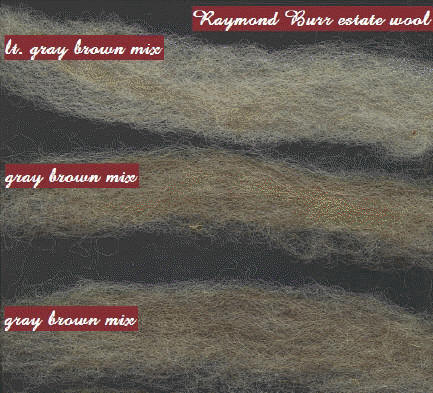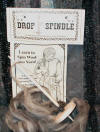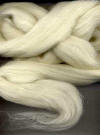Spinning Fibers
SPECIAL SALE!!!!
 |
Raymond Burr, the actor, raised Romney/Karakul sheep in the hope of breeding a sheep that would produce a peach-colored wool (or so the story goes), After his death, I purchased a large amount of roving from the estate. This is the remainder of that lot. He apparently had the wool made into roving, and then sent the roving to be spun and made into rugs which he gave to his friends. The roving is medium softness, as you would expect for a rug, but you could make outer garments with it also. A true piece of Hollywood memorabilia, I'm selling off the roving for $3.00 per ounce. Please specify the colors you want. If you buy a pound or more, you will be provided with copies of documents I received from the estate. You must contact me directly to purchase this roving to be sure I still have the amount you want.
|
| Stock items |
|
|
|
|
|
|
Drop Spindle kit - includes
plain hardwood drop spindle, starter thread, wool/mohair or natural
wool roving and
instructions. $15.95
|
Bleached Tussah Silk
roving ~ $22.50 for 8 ounces
|
||
|
|
This page was updated October 18, 2014.
No reproduction without permission. All rights reserved.
Copyright ©1998-2014 by Chris Gustin
Spinning fiber info:
Top is created when fine or medium wool is cleaned, carded
and then combed so
that the short fibers, nubs and noils are removed and the fibers are
organized in a parallel manner. The fibers in combed top are also more lustrous
and reflect color more brightly. Top is usually spun using the worsted method.
In worsted spinning you keep the twist out of the drafting triangle as you spin.
Roving is when the wool is washed and put
through a carder but the fibers are many different lengths and are not
necessarily parallel. Roving is usually spun with the woolen method. With the
woolen method you allow some twist into your draft area. Roving is often the
first choice for wet and needle felters. The multiple lengths and direction
of the fibers in roving allow for air pockets to form thus making a thicker yarn
with a higher insulation factor.



